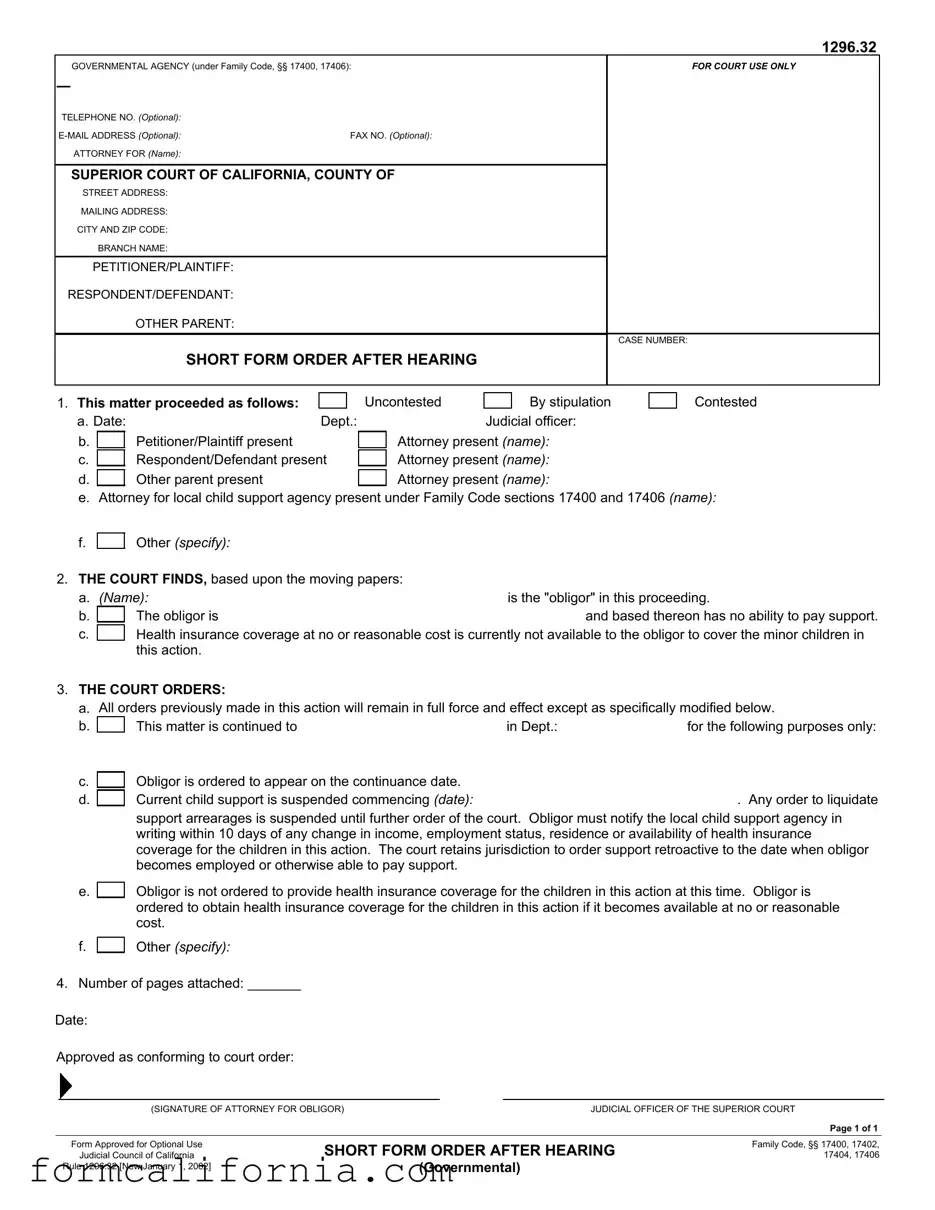In the landscape of family law within California, the 1296.32 form holds a critical position, especially in proceedings involving child support, an area notably intertwined with both financial and emotional aspects of family dynamics. This form, officially known as the Short Form Order After Hearing under Family Code sections 17400 and 17406, serves a fundamental purpose in the Superior Courts of California. It is a documentation tool used primarily by a judicial officer to outline the court's findings and orders following a hearing, specifically related to child support obligations. The form meticulously records the proceedings, marking whether the petitioner/plaintiff, respondent/defendant, other parent, attorneys, and representatives from local child support agencies were present. It highlights key judicial findings such as the identification of the obligor, their ability or inability to pay support, and the availability of health insurance for the minor children involved. Moreover, the form specifies court orders regarding the continuation or modification of any existing orders, suspension of current child support or arrearages, obligations of the obligor to notify changes in income or employment status, and directives concerning health insurance coverage for the children. Its precise structure ensures that all parties are clear on their rights and responsibilities following the court's ruling, aiming to streamline the enforcement and modification of child support arrangements in California's legal system.











